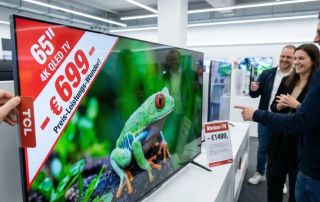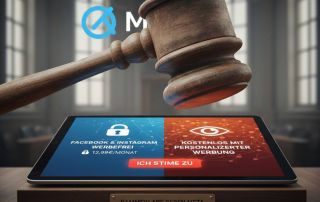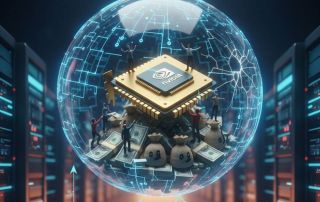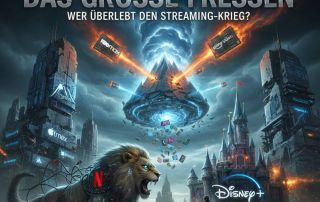ChatGPT and Atlas: The separation of mind and body in AI
When the term “ChatGPT Atlas” comes up, it’s often a case of confusion or an unconscious conflation of two of today’s most fascinating, yet completely separate, technology projects. There is no official product called “ChatGPT Atlas.”
Instead, these two names represent two distinct frontiers of artificial intelligence:
- ChatGPT: The revolution of speech AI (the “mind”).
- Atlas: The revolution of humanoid robotics (the “body”).
This article explains what these two technologies are and why their hypothetical fusion represents the future of AI.

What is ChatGPT?
ChatGPT is a highly sophisticated AI language model (Large Language Model, LLM) developed by OpenAI.
Purpose: ChatGPT is trained to understand, process, and generate human language. It is a purely software-based product—a “brain” in a data center.
Capabilities: It can answer complex questions, write code, translate text, create content, and draw logical conclusions.
Interaction: Interaction occurs exclusively through text (or speech input converted to text). It has no physical body and cannot interact with the real world except by outputting information.
In short: ChatGPT is the intelligence (software).
What is Atlas?
Atlas is a humanoid robot developed by Boston Dynamics (a subsidiary of Hyundai Motor Group).
Purpose: Atlas is a research platform for mobile robotics. Its primary focus is on physical dexterity, balance, and the ability to navigate complex, unstructured environments.
Capabilities: Atlas is renowned for its ability to run, jump, climb stairs, navigate obstacle courses (parkour), and manipulate objects. The older hydraulic versions demonstrated incredible agility, while the newer (introduced in 2024) all-electric Atlas showcases even smoother and more powerful movement.
Interaction: Atlas physically interacts with the world. It is traditionally controlled for specific, pre-programmed choreographies or via teleoperation (remote control), although Boston Dynamics is increasingly employing AI (such as reinforcement learning) to help the robot learn how to move.
Abilities: Atlas is renowned for its ability to run, jump, climb stairs, navigate obstacle courses (parkour), and manipulate objects. In short: Atlas is the body (hardware).
Why the confusion? (The Future: Embodied AI)
The reason why the terms “ChatGPT” and “Atlas” are often mentioned in the same breath or conflated is simple: they represent the two halves of what we imagine a “real” artificial intelligence or android to be.
The public sees the explosive progress in two areas:
- AI brains (LLMs): They can think and speak (e.g., ChatGPT).
- AI bodies (robots): They can move and act (e.g., Atlas).
The term “ChatGPT Atlas” is therefore a phantom term that describes the desire (or fear) for “embodied AI”: a robot with the physical agility of Atlas and the linguistic and cognitive intelligence of ChatGPT.
The real merger is already happening
Even though Boston Dynamics (Atlas) and OpenAI (ChatGPT) aren’t directly working on a “ChatGPT Atlas,” this very merger is taking place in the industry:
Figure AI & OpenAI: The startup Figure AI, which also builds humanoid robots, has partnered with OpenAI. Their goal is to use OpenAI models as the “brain” for their robots, enabling them to understand the world and respond autonomously to voice commands.
Tesla Optimus: Elon Musk’s project aims to integrate the AI systems that power Tesla’s Autopilot into a humanoid robot capable of performing useful tasks.
Figure AI & OpenAI: The startup Figure AI, which also builds humanoid robots, has partnered with OpenAI. Their goal is to use OpenAI models as the “brain” for their robots, allowing them to understand the world and respond autonomously to voice commands. Boston Dynamics: The new electric Atlas will also rely heavily on AI and machine learning to perform its tasks – although (so far) with a focus on movement and manipulation rather than conversation.
Conclusion
ChatGPT and Atlas are separate, groundbreaking technologies from different companies. ChatGPT is the software (language), Atlas is the hardware (movement).
A “ChatGPT Atlas” does not exist. However, the term perfectly symbolizes the ultimate goal of robotics: the creation of an autonomous robot that possesses both advanced cognitive abilities and human-like physical dexterity.
Beliebte Beiträge
TCL TVs: Price-performance marvel or cheap compromise?
TCL is enticing customers with rock-bottom prices for huge TVs. But are these 65-inch Mini-LED sets really any good? We analyze their strengths and weaknesses, reveal the secret behind the low prices (CSOT), and compare them to Samsung and Sony to see who should consider buying one.
Gehaltsverhandlung führen: 5 Sätze, die du niemals sagen darfst
Ein falscher Satz kann dich Tausende Euro kosten. In der Gehaltsverhandlung lauern rhetorische Fallstricke. Wir zeigen dir, warum Sätze wie "Meine Miete ist gestiegen" tabu sind und wie du stattdessen professionell mit deinem Marktwert argumentierst.
Meta in court: Will the subscription requirement now be overturned?
Those who want an ad-free Facebook experience have to pay – or agree to extensive tracking. A lawsuit challenging this model is now underway. Will the mandatory subscription model be overturned in court? Find out why consumer advocates consider the practice illegal and what this means for users.
Nvidia before the showdown: Insiders sell – Is the AI bubble about to burst?
Nvidia faces crucial earnings reports: Insiders like Peter Thiel are selling off shares in droves. Is the AI hype over, or does the dip offer opportunities? Current analysis.
The Great Feast: Who will survive the streaming war?
The streaming market is imploding. Services like Paramount+ are fighting for survival, and Disney is posting billions in losses. Is a major wave of mergers imminent? What will happen to our content and subscriptions when the consolidation begins?
10 signs that it’s time for a new job!
Dissatisfied with your job? This article reveals 10 clear signs that a job change might be necessary. If the Sunday blues become chronic, you're no longer learning anything, or you lack appreciation, it's time to be honest with yourself. A guide to making your career decision.

































